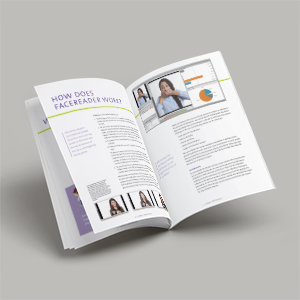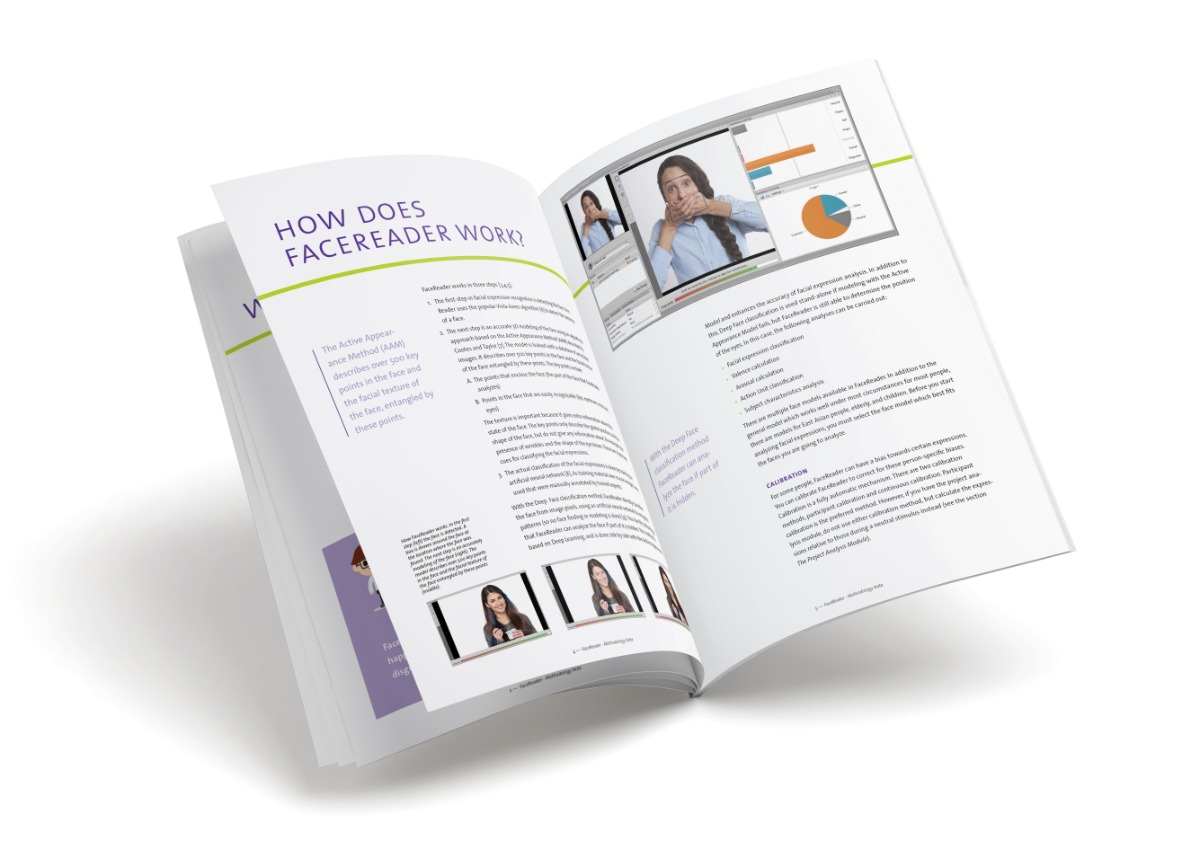
How to measure emotions
In a previous blog post titled “How emotions are made”, I have outlined how neuroscience research in the past decades has shown that our brain gives meaning to our experiences/sensations through concepts such as emotions. So, emotions are created in the brain, rather than triggered by fixed brain circuitry in response to specific stimuli.
In a follow-up post, “Why so angry? The role of context and function in facial expression analysis.” I explained how context is important when studying facial expressions.
How to measure emotions
The current blog post will be about how to measure emotions. What tools are available to us to, for example, measure the emotional response of a consumer to a commercial or different products? Can we rely on self-reports only, or do we also have to take into account behavioral measures (e.g., gestures, body position), physiological responses (e.g. heart rate, skin conductance), and facial expressions?
In the current blog post, I will outline the concept of emotions in relation to how to possibly measure emotions. Spoiler: measuring/assessing emotions is not always straightforward and easy. Let me illustrate this with a story.

Good grief
I had boarded the plane at Amsterdam Schiphol airport as one of the first passengers and was pleased that I had managed to book a seat with extra leg room in one of the emergency exit rows. This would mean that I would probably be able to get a good night’s sleep on the 12+ hr. flight that would take me to Changi airport in Singapore.
After I had situated myself with a pillow, book, smartphone and noise-canceling headphones, I started watching the other passengers entering the plane. One woman that was part of a group of 4 or so women caught my eye because she appeared to be in grief: her face was very sad, her cheeks were wet with tears, and she wiped her eyes with a tissue.

Immediately my brain started to devise all kinds of scenarios to explain why the woman might be distressed: she was on her way to a deceased family member in Singapore, or she might just have heard that a good friend was terminally ill. I felt sorry for her as she really seemed heartbroken.
As I tried to radiate my sympathy towards her, the woman turned around to one of her friends, who also had a solemn look on her face, and as soon as their eyes met, both started roaring with laughter.
The grieving woman nearly fell down to the floor laughing, her friend had to hold her to prevent that from happening. Laughing and screaming they made their way to their seats at the rear of the plane. I felt amused but at the same time surprised and puzzled. How could I have been so wrong assessing this woman’s emotional state?
Want to learn more about facial expression analysis? Check out one of our on-demand webinars on FaceReader!
The classical view vs. the construction approach
The answer lies in how one views the nature of emotions. The picture below shows a continuum with three representative emotion theories from the field of psychology.

Figure 1. Three ‘zones’ with emotion theories throughout the ages: Basic emotion, Appraisal and Psychological construction theories. Explanation about the Basic emotion and Psychological construction theory is shown below. Taken from: Barret, 2016, Navigating the science of emotion. In: Emotion Measurement, edited by Herbert L. Meiselman, Woodhead publishing.
In Basic emotion theory (i.e., the classical view), an emotion is understood to be an independent faculty caused by its own specific processes. Something like in the schematic drawing below:

Figure 2. The measurement model for the classical view of emotion. Taken from: Barret, 2016, Navigating the science of emotion. In: Emotion Measurement, edited by Herbert L. Meiselman, Woodhead publishing.
This classical view assumes a causal mechanism (the emotion essence: Anger, in this example) for the resulting emotion fingerprint, which can be measured by behavioral, facial and physiological (BP = blood pressure) outputs.
At the opposite side of the continuum is the Construction approach. The schematic drawing below shows the measurement model for this theory of constructed emotion:

Figure 3. The measurement model representing the construction approach to emotion. Taken from: Barret, 2016, Navigating the science of emotion. In: Emotion Measurement, edited by Herbert L. Meiselman, Woodhead publishing.
The Construction approach to emotion does not provide mechanisms that cause emotion but only tries to explain how measures might configure to assess an instance of emotion. The brain constructs an emotion based on information from inside the body, information from the outside world, and based on past experiences.
“The nearest exit may be behind you”
I fell victim to the Classical view when I assessed the tearful woman as being sad. I assumed that something must have happened (‘Stimulus’ from figure 2) that resulted in the emotion essence Sad of which the emotion fingerprint is tears, red eyes and a sad face. Just like emotion Anger, according to the Classical view, always causes a person to start yelling, scowling and hitting someone.
However, this is not how it works in real life, just like the fastest way out of a plane is not always by running forward.
Measuring emotions needs variation
Variation is the norm when it comes to measures of emotion. One happy person might fall down to her knees and shed tears of joy (like Simona Halep winning Wimbledon), while another person might just smile and look like he is going to get another beer from the fridge (like Novak Djokovic winning Wimbledon).
Obviously, this poses a challenge when measuring emotions. Not only individual differences and the context need to be taken into account; optimal measurement of emotion requires a multimodal approach. Assessment of facial expressions, behavioral and physiological responses will not necessarily be correlated, so all need to be measured in order to assess experience of emotion.

Get the latest blog posts delivered to your inbox - every 15th of the month
more

The man in the maze: A behavioral science journey into consumer studies
As a researcher, one of my biggest thrills was being able to predict how someone was going to behave, especially without asking him or her.
For Pete’s Sake: Measuring Frustration
Within the field of human factors and usability, frustration poses an interesting challenge. It can be a barrier for learning. So how can we measure frustration in order to minimize it?

